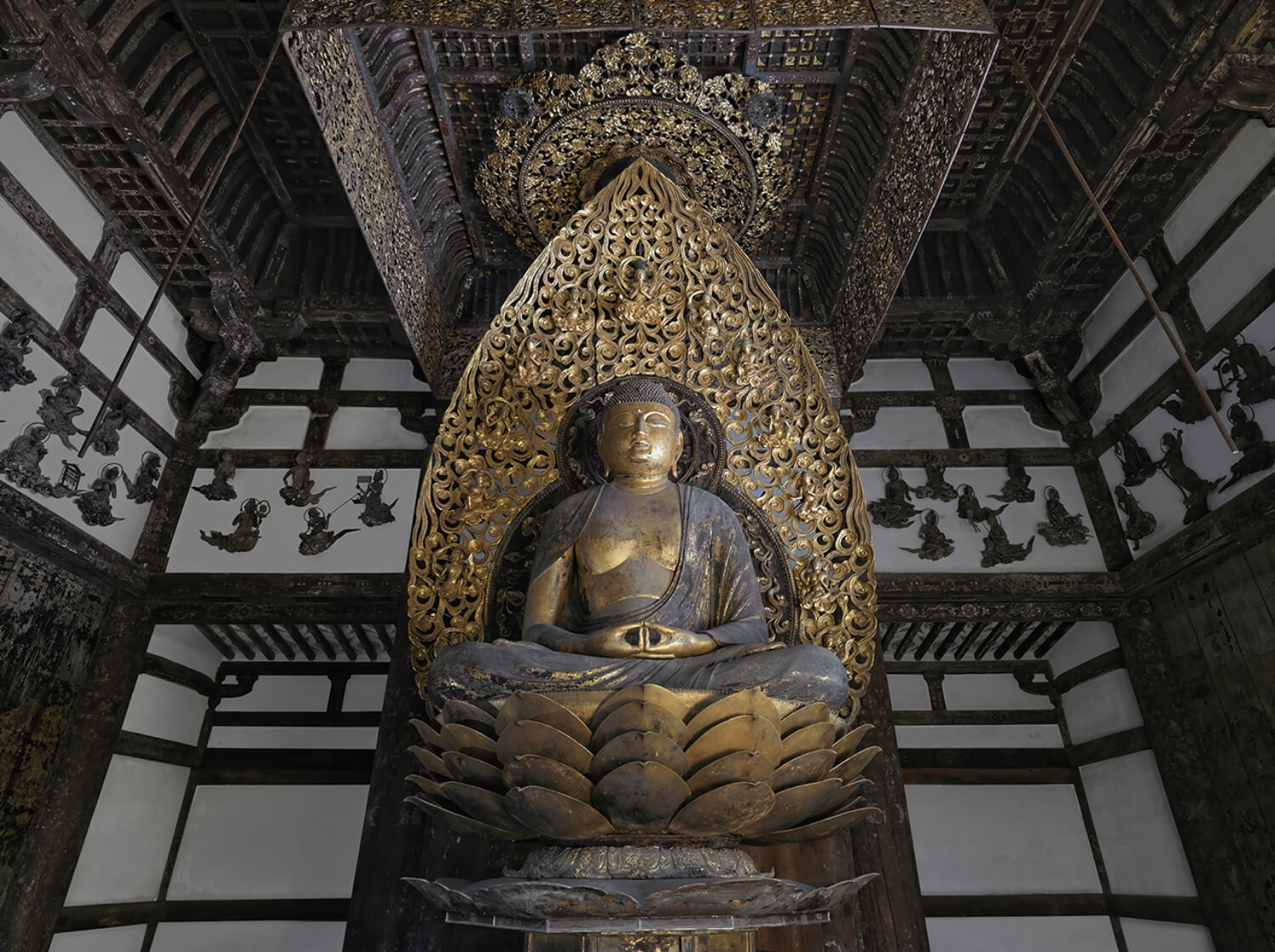Amida Buddha

Byodoin’s Amida (Sk. Amitabha) Buddha is a designated National Treasure, installed on its lotus-shaped pedestal in the Amida Hall (Phoenix Hall) nearly 1,000 years ago. The image gazes at the devotee through eyelids half-closed in meditation, one leg folded over the other in meditative posture. His gentle features, upright seated pose, and hands held in a sacred mudra (gesture) depict the Buddha in a pose of relaxed concentration.
The statue was completed in 1053, a year after aristocrat Fujiwara no Yorimichi (992–1074) founded Byodoin. Pure Land (Jodo) devotees feared that the age of Mappo (“the end of the Law”) was imminent and that the traditional doctrines and practices of Buddhism would become ineffective. Believers such as Yorimichi hoped to be reborn in the Pure Land and there to make progress toward enlightenment under favorable conditions afforded by the blessings of Amida Buddha. Yorimichi commissioned the statue in the hope that this act of faith would help him to enter Amida’s Pure Land. The 2.8-meter-tall statue is the only surviving work attributed to Jocho (?–1057), distinguished Buddhist sculptor of the Heian period (794–1185). Jocho was highly influential: his Byodoin Amida became a stylistic standard for Buddhist statuary for the next two centuries.
Jocho and his workshop created this Amida using the joined-wood technique known as yosegi-zukuri. The technique entails the joining together of smaller pieces of wood to construct larger, lightweight, but durable statues. After Jocho and his team joined the individual cypress blocks together and carved and shaped them, layers of cloth, lacquer, and gold leaf were applied to cover the statue’s joints. The final step gave the statue a celestial golden glow.

